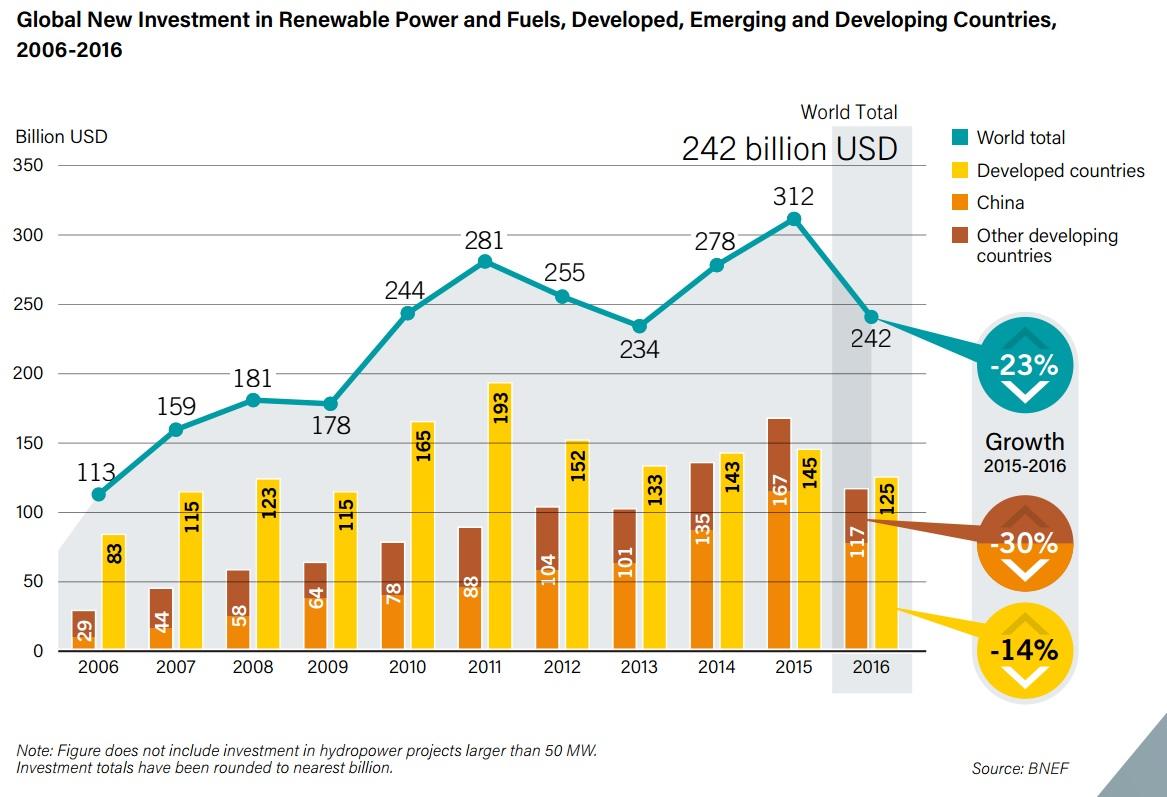Renewable Energy Sees Global Surge As More Companies Commit To 100% Renewables
Global advancement in renewable resources has grown by nearly a double-digit percentage from 2015 to 2016. While capacity has shot up according to an annual status report by REN21, higher taxes, and lower subsidies have downgraded investment.
Updated May 23 2019, 4:25 p.m. ET
The Renewable Energy Policy Network for the 21st Century, also known as REN21, released their 2017 Global Status Report on June 7th. It shows how renewable energy is growing throughout the world with upgraded capacity and a variety of nations and businesses opting to convert to 100 percent renewable sources. However, the report also suggests that the movement needs to happen at a faster rate.
2016 saw the birth of 161 gigawatts worth of renewable power added throughout the world. That’s a nine percent increase from the prior year, and most of that is due to how rapidly solar panel technology has fallen. Nearly half of the additions came from solar generation (47 percent). Wind generation came at 34 percent and hydropower at 15.5 percent. Electricity costs are as low as $0.03 per kilowatt-hour in countries like Argentina, Jordan, and the United Arab Emirates.
While growth is still slow in smaller, underdeveloped countries, it’s only a matter of time before the cost cutting reaches them. China, which is the second-richest country in the world on pure GDP, is around the middle of the charts when that’s spread out per person. It’s still been the biggest developer of renewable energy for eight years running. 48 other developing countries have also announced a commitment to fully being ran on sustainable sources.
100 percent commitment has been a growing trend among many cities, countries, and businesses throughout the world. The movement will help cut back on harmful carbon dioxide emissions. REN21’s report states that “under the Covenant of Mayors for Climate & Energy, more than 7,200 communities with a combined population of 225 million people are committed to reducing emissions 40% by 2030, by increasing energy efficiency and renewable energy deployment.”
While there’s been a lot of growth, not everything had a positive trend. Global investments were down by 23 percent from 2015, falling to around $241.6 billion. Some of the issues were because of slowdowns in the Asian market. China spent more time than usual improving their power grid, but announced that they would spend upwards of $360 billion on renewable energy through 2020. Tariffs were added to wind power in Japan, which slowed production down by roughly 70 percent.
Fossil fuels are also supported too much in comparison to renewable energy. Governments still pay four times as much in subsidies to the former than the latter. The United Kingdom saw an 81 percent decrease in solar panel installations in the first three months of 2017, which is at its lowest point in the last six years.
All of that can change in a matter of moments. REN21’s report points out China’s ability to cancel over 100 coal-fired power plants that were in production and ordered nearly a complete stoppage of construction just a month ago. It’s going to take this aggressive approach from other countries, and the fear of governments losing money on their production -- only to be shut down in the near future -- could help the process.

